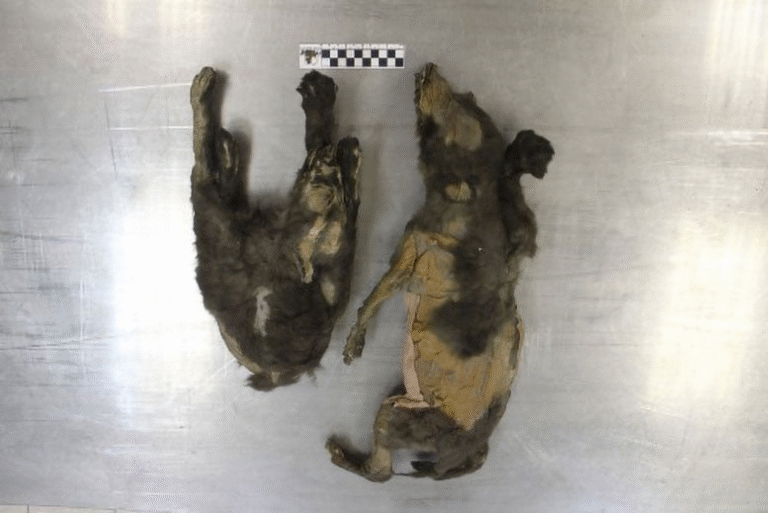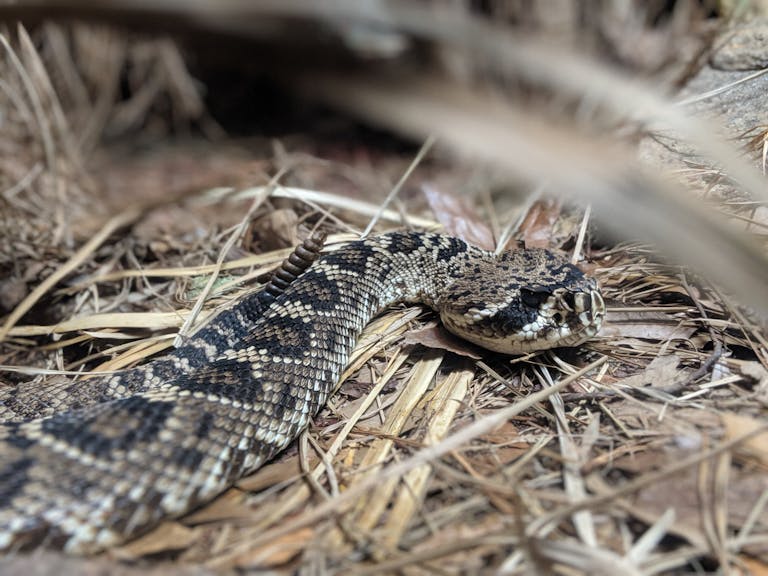Spiders in Taiwan Use Firefly Glow as Deadly Bait to Lure More Prey

Deep in the forests of Taiwan, researchers have uncovered a remarkable and chilling predation strategy involving a nocturnal sheet web spider known as Psechrus clavis. This spider doesn’t just capture fireflies—it turns them into glowing traps. Instead of eating the bioluminescent insects right away, the spider lets them live for a while, exploiting their natural glow to attract even more unsuspecting victims into its web.
This unusual discovery reveals a rare case of a predator hijacking its prey’s mating signal to increase hunting success. The study, conducted by scientists at Tunghai University and National Taiwan University, was published in the Journal of Animal Ecology on August 27, 2025.
The Discovery: Glowing Bait in the Web
Ecologists observed that the sheet web spider Psechrus clavis often leaves fireflies (Diaphanes lampyroides) alive after trapping them. These fireflies, which emit a continuous glow to attract mates, continue to shine even while entangled in the web for nearly an hour. The spiders occasionally return to inspect the glowing captives, seemingly aware that the light serves a purpose.
Researchers documented that when these spiders capture other insects, such as moths, they behave differently—those prey are quickly immobilized and consumed. But when it comes to fireflies, the spiders delay feeding. This distinction suggests that the spiders can recognize different prey types and choose how to handle them based on certain cues, likely the bioluminescent signals themselves.
Testing the Hypothesis
To confirm whether the glowing prey actually helps the spiders hunt more effectively, the team designed a clever field experiment. They installed LED lights in real spider webs, carefully mimicking the firefly’s glow in both wavelength and intensity, while leaving other webs untouched as a control group.
The results were striking. Webs that contained glowing LEDs caught three times more insects overall compared to the control webs. Even more fascinating, when the researchers focused only on fireflies, the illuminated webs captured up to ten times more fireflies.
Most of the newly trapped fireflies were males, likely deceived into approaching what they thought was a potential mate. The findings confirmed that the glow indeed increases prey attraction, validating the idea that the spider is weaponizing the light of its captured prey.
How the Strategy Works
The spiders’ approach is a textbook case of sensory exploitation. In nature, many animals rely on signals like light, color, or sound to find mates or food. The winter firefly, for example, emits a steady, continuous glow to communicate with potential partners in the dark forest. By leaving these glowing fireflies alive, the spider effectively outsources the job of attracting prey—using the fireflies’ own biological signal as a lure.
Unlike anglerfish, which produce their own bioluminescent bait to attract prey in the deep ocean, Psechrus clavis saves energy by using what its victims already provide. It’s an efficient strategy—no need to evolve or maintain the complex chemistry of bioluminescence when you can just borrow it from your meal.
This method also shows remarkable behavioral sophistication. The spider can apparently distinguish between prey species, choosing to preserve the glow of fireflies while quickly dispatching less “useful” catches. This adaptive flexibility gives it a significant advantage in a competitive nocturnal ecosystem.
Experimental Details and Caveats
The field study took place in the Xitou Nature Education Area, a conifer plantation forest managed by National Taiwan University. Researchers used LEDs tuned to match the color and intensity of Diaphanes lampyroides’ bioluminescent signal.
While the results were convincing, the scientists noted that LEDs can only approximate real firefly light. Fireflies’ bioluminescence has subtle variations—in rhythm, wavelength, and brightness—that artificial lights can’t fully reproduce. The researchers acknowledged that future experiments using real fireflies would provide even stronger evidence, though such studies are extremely difficult to perform in the wild.
Another key observation was that trapped fireflies can remain alive and glowing for up to an hour after capture. The scientists suggested that the spider’s venom may immobilize them without immediately killing them, allowing the glow to persist. The glow, intended as a mating signal, instead becomes a beacon of doom for other fireflies and insects flying nearby.
The Broader Ecological Significance
This behavior highlights a previously undocumented interaction in predator-prey relationships. By exploiting the visual signals of its prey, the spider demonstrates how communication systems in nature can be co-opted for entirely different purposes.
In ecological terms, this is an example of signal hijacking—a predator turning a prey’s biological signal, meant for reproduction or communication, into a weapon. It’s rare but not completely unique. Similar strategies exist in other animals:
- Anglerfish create their own light to lure prey.
- Bolas spiders mimic the pheromones of female moths to attract males.
- Frog-eating bats can recognize and follow the mating calls of frogs to find dinner.
However, what makes this case special is that the spider doesn’t create or mimic a signal—it reuses the prey’s real one. The prey essentially becomes part of the trap itself.
A Matter of Energy and Evolution
Producing light biologically is energy-intensive. Fireflies, for instance, rely on a chemical reaction involving luciferin and luciferase enzymes, which consumes oxygen and energy with every flash. Many predators never evolve this ability because of its high metabolic cost.
By using glowing fireflies as bait, Psechrus clavis avoids that expense entirely. Over evolutionary time, such behavior could be strongly favored—it maximizes hunting efficiency while minimizing energy investment. This could explain why bioluminescence-based predation is rare on land but more common in aquatic systems, where light-based signaling is more widespread.
This also opens questions about whether other spider species have evolved similar tricks. The genus Psechrus includes various species found across Asia, and many build wide, horizontal webs near forest floors or stream edges—places frequented by flying insects at night. It’s possible that other sheet web spiders have independently developed comparable strategies.
What Makes Fireflies Special
Fireflies (family Lampyridae) are famous for their natural glow, which they use for communication, mating, and defense. The light is a result of a chemical reaction that produces almost no heat—a process known as cold light emission.
Different firefly species have distinct light patterns, colors, and flashing rhythms. In Diaphanes lampyroides, the species observed in this study, the light is steady and continuous, not flashing. This continuous glow makes it especially suitable for the spider’s exploitation since it provides constant illumination in the dark.
Interestingly, most fireflies use their glow as a mating signal, but it can also serve as a warning—a way of saying, “Don’t eat me, I’m toxic.” Some predators, like spiders, may have evolved resistance to the toxins or learned to ignore the warning if the benefits outweigh the risks.
Predator and Prey in the Night Forest
The Taiwanese forests where this interaction occurs are rich in nocturnal biodiversity. Sheet web spiders typically build large, flat webs close to the ground or among dense vegetation. They are sit-and-wait predators, relying on vibration and visual cues rather than active hunting.
The fireflies, on the other hand, emerge during the humid months, lighting up the forest understory. The spiders’ webs are perfectly positioned to intercept them. When a firefly gets caught and continues glowing, it effectively turns the spider’s web into a light trap—visible to other insects flying nearby.
The spiders seem to monitor these glowing webs closely. Researchers observed them returning to check on the captured fireflies multiple times. This behavior suggests that the spiders are aware of the utility of the glow, even if not consciously in the human sense.
A Unique Window Into Nature’s Complexity
This discovery challenges our assumptions about predator intelligence and adaptation. It shows that even creatures without large brains can exhibit complex behavioral strategies shaped by natural selection.
By learning to take advantage of existing ecological signals, these spiders have found a way to thrive in an environment where visibility is limited and competition for prey is fierce. The finding also contributes to our broader understanding of how communication signals in nature—like light, sound, and color—can evolve under competing pressures from both mates and predators.
There’s a poetic irony to it: a firefly’s glow, meant to attract love, becomes the very thing that attracts death.
Study Details
- Species studied: Psechrus clavis (sheet web spider)
- Prey species: Diaphanes lampyroides (winter firefly)
- Location: Xitou Nature Education Area, National Taiwan University, Taiwan
- Institutions involved: Tunghai University, University of New South Wales, National Museum of Natural Science
- Published in: Journal of Animal Ecology
- Publication date: August 27, 2025
The researchers believe this discovery represents one of the first documented cases of a terrestrial predator using prey bioluminescence as a lure for further prey. It also highlights how even small, nocturnal animals can exploit complex sensory systems in unexpected ways.
Reference:
“Prey bioluminescence-mediated visual luring in a sit and wait predator” — Ho Yin Yip, Sean J. Blamires, Chen-Pan Liao, and I-Min Tso, Journal of Animal Ecology, 27 August 2025.
https://doi.org/10.1111/1365-2656.70102





